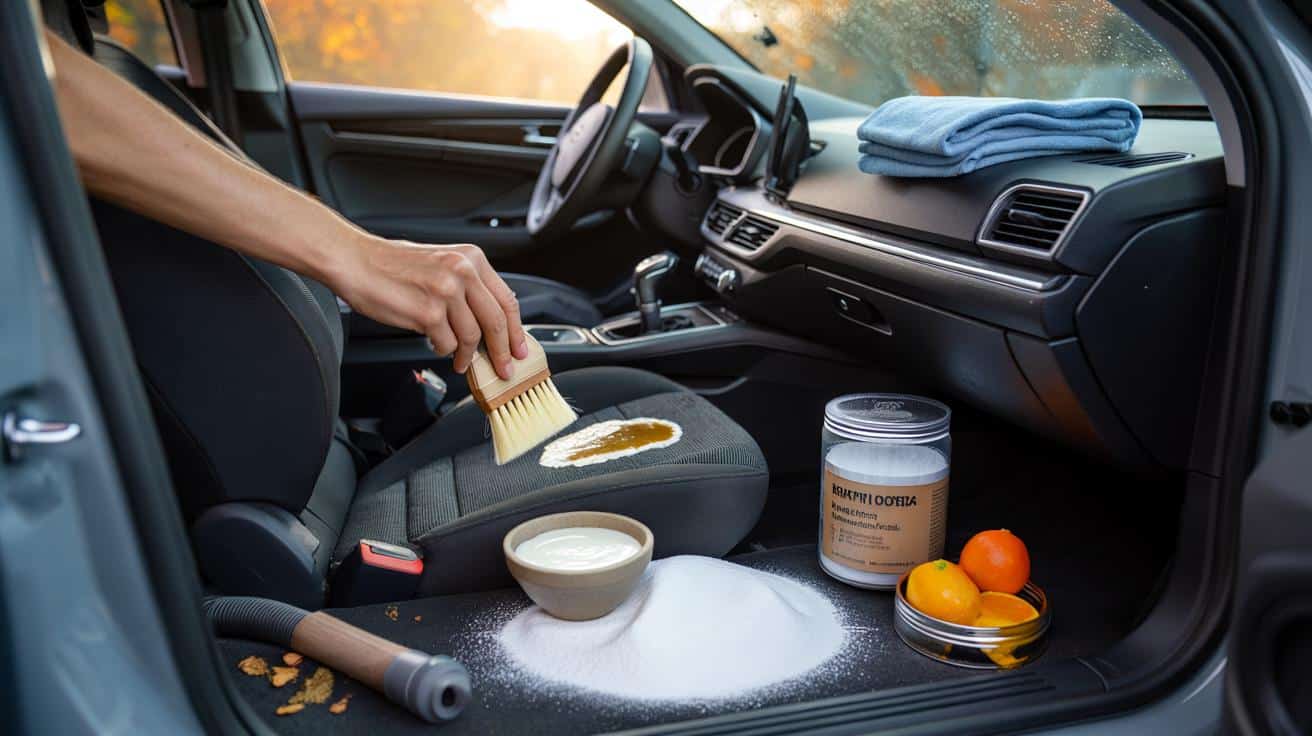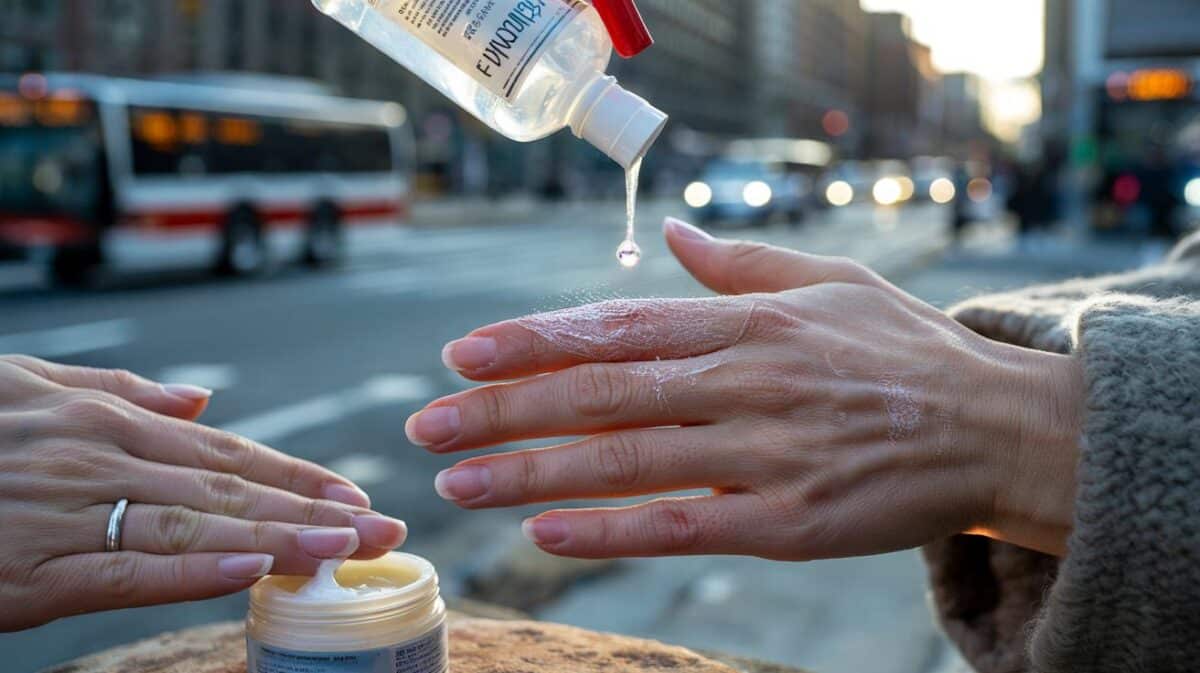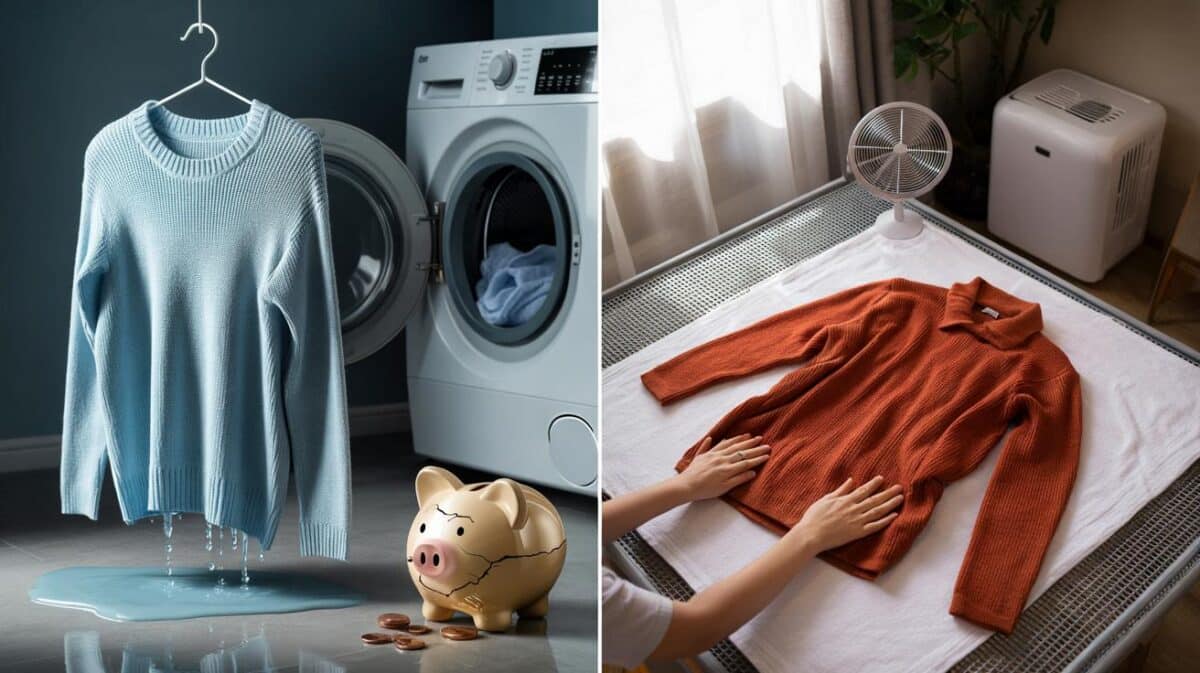Drivers feel it daily.
Commutes stretch longer, daylight shrinks, and crumbs, damp and pet smells build up fast. Households already watching the pennies want a fix that works, costs little and doesn’t leave a heady perfume hanging in the air.
Autumn grime meets tight budgets
Car interiors face a perfect storm from late September: wet coats, muddy shoes, school runs, sports kits and snack stops. That cocktail leaves seats marked, plastics greasy and mats sour. Detailers can tidy it all, but a quick visit rarely costs less than several tens of pounds. Supermarket sprays promise miracles, yet many mask smells rather than lifting them.
One cheap, shelf-stable staple is quietly winning the season: bicarbonate of soda. It absorbs odours, lifts stains and freshens plastics without leaving a perfumed trail.
Most UK supermarkets sell 500 g for about £1–£2. You need a microfibre cloth, warm water and a hoover. No perfumes. No streaky sheen. No long learning curve.
The method that saves your cabin
Seats and carpets: lift stains, neutralise smells
- For odours: sprinkle a light, even layer over dry mats and carpeted areas. Leave 45–60 minutes. Hoover thoroughly.
- For fresh spills: blot liquid first. Mix 2 teaspoons bicarbonate with 100 ml warm water to make a loose paste. Work it into the stain with a soft brush. Wipe with a damp cloth, then dab dry.
- For set-in marks: thicken the paste slightly, apply a thin coat, agitate gently, leave 5–10 minutes, then wipe and blot. Repeat once if needed.
A light dusting for odours, a thin paste for stains: one box tackles both jobs without bleaching fabrics.
The fine powder binds many acidic and fatty compounds responsible for stubborn smells from food, sweat and pets. It also adds mild abrasion that helps release dried coffee or chocolate without rough scrubbing. Always test on a hidden patch first, especially on delicate trims or dyed alcantara.
Dashboards and plastics: clear the film, ditch fingerprints
Greasy films on dashboards catch low autumn sun and make cabins look tired. Mix 2 teaspoons bicarbonate with 150 ml warm water. Dip a microfibre cloth, wring well, and wipe in straight lines. Follow with a second cloth dampened with plain water to pick up residue, then buff dry.
- Use a barely damp cloth on touchscreens and high-gloss trims; avoid direct contact if the screen has an anti-glare coating.
- On textured plastics or door pulls, a soft toothbrush lifts grime from grooves.
Short, straight wipes cut the haze; a clean buff restores a natural, non-greasy finish that doesn’t attract dust.
Glass, headlights and micro-haze: see clearly again
Visibility drops fast on wet evenings. For interior glass, mix 1 teaspoon bicarbonate with 250 ml warm water. Wipe with a lint-free cloth, then dry with kitchen roll for a crisp finish. On exterior glass and headlight lenses, use the same mix, but rinse with clean water before drying.
Minor wiper haze and light road film often clear with this routine. Deep scratches won’t vanish. If you notice faint clouding, switch to a plain glass cleaner for the final pass and use less pressure next time.
Quick wins you can do on a lunch break
- Cupholders: damp cloth with a pinch of powder, twist, then wipe dry in under 2 minutes.
- Boot mats: shake off debris, dust with bicarbonate, leave while you work, hoover before the school pickup.
- Cigarette odour hotspots: place 1–2 tablespoons in an open jar in the cupholder for 24 hours, then replace weekly.
What to use where
| Problem | Mix | Method | Typical time |
|---|---|---|---|
| Food spills on fabric | 2 tsp / 100 ml warm water (paste) | Apply thinly, agitate, wipe, blot dry | 6–10 mins |
| Musty mats or pet odour | Dry powder | Dust, rest 45–60 mins, hoover | 5 mins hands-on |
| Greasy dashboard film | 2 tsp / 150 ml warm water | Wipe, rinse cloth, buff | 8–12 mins |
| Headlight film | 1 tsp / 250 ml warm water | Wipe, rinse, dry | 5–7 mins |
Why this works without the stink of perfume
Bicarbonate attracts and neutralises many odour molecules. It also acts as a gentle abrasive that lifts surface grime without biting hard into plastics or fabric fibres. You get a clean surface that doesn’t feel oily, so dust sticks less and fingerprints show less.
One £1.50 box covers dozens of quick jobs, from the boot liner to the cupholder—enough for a month of busy commutes.
Limits, risks and smart tweaks
- Test first on a hidden spot, especially on dyed leather, alcantara, piano-black plastics and aftermarket tints.
- Use minimal pressure on glass to avoid adding fine swirls. Finish glass with a plain cleaner if any residue remains.
- Don’t use a gritty paste on glossy screens or instrument clusters. Use a nearly dry cloth with the dilute mix instead.
- Never rub trapped grit into paint. Rinse exterior surfaces first if you try it on badges or trims.
Want a neutral scent after a deep clean? Drop two citrus peels in a small open jar, add 3 tablespoons bicarbonate, and leave it in the boot overnight. The peels add a light note while the powder continues absorbing background odours.
Make a 15-minute weekend routine
Keep a zip bag with a microfibre cloth, a soft brush and a small tub of bicarbonate in the boot. Each weekend: dust mats, wipe the dash, clear the cupholders, and run a quick pass over the steering wheel trim. The habit keeps costs low and stops small messes turning into Saturday-afternoon jobs.
If you share the car with pets or small children, rotate tasks: week one seats, week two mats, week three plastics. The rotation evens out wear and keeps the cabin consistently fresh long after the first chill of autumn settles in.








